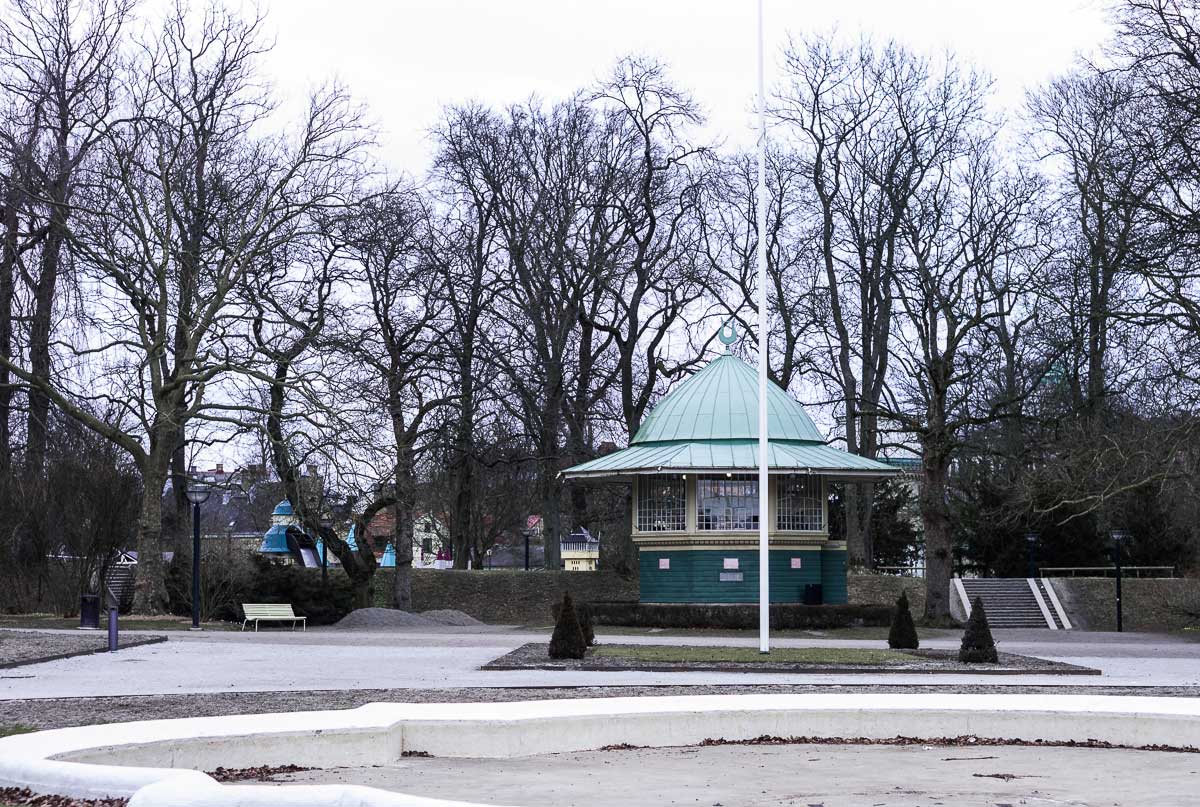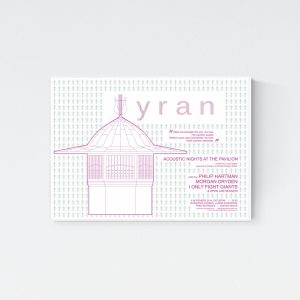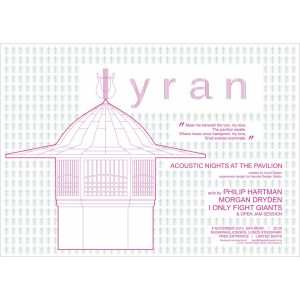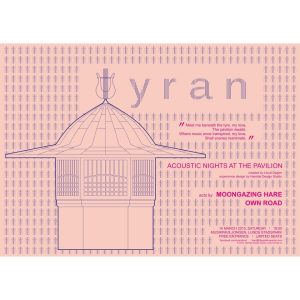
an experience design project in Southern Sweden, Lund
The Brief
Design of visual identity as well as space design for Lyran acoustic concert series taking place at Music Pavilion at Lund City Park.
keywords: context
The Design
Lyran, takes its name from the lyr on top of the music pavilion at the Lund City Park, which is the venue or all the concerts. Hence, the design uses this space and its elements to make it unique.
keywords: minimal, relevance to context
Logotype
“Lyran” concert series takes its name from the lyre positioned on top of the music pavilion. Therefore, the visual identity puts a special emphasis on the lyre specific to this construction. The logotype consists of a lyre illustration that is incorporated into the text “lyran” making the letter “L” with its strings. The same string idea is also applied to other letters for consistency. The color green is picked as an association of the actual lyre on top of the pavilion. A simple font with slight curves matching with the lyre form is selected. Some editing is done on the font to serve better with the lined structure of letters.


Promotional Postcard
“Lyran” being a site specific event to the music pavilion in Lund City Park, the promotional postcard features a simple illustration of the pavilion. The logotype is incorporated into the pavilion illustration. A poem written by Lloyd Degler and basic information are provided to inform the audience.

Facebook Covers
The designs continue to use the music pavilion illustration. The lyre is used as background pattern. The color scheme changed based on the event.



Lyran #1 & Installation 1907-2014…
The first Lyran event took place on the 8th of November 2014 at the Music Pavilion in Lunds Stadspark. Philip Hartman, Morgan Dryden, and I Only Fight Giants performed in an acoustic setting. As Hamide Design Studio, we were responsible for the experience design of the first Lyran event. We designed the installation “1907…2014…” to enhance the experience.
“1907… 2014…” is a site-specific installation that focuses on time and space within the context of the site “music pavilion”, and the creators and designers of “Lyran”. In this vein, the installation explores the history of the music pavilion, and goes back to 1907, to the time of its construction for the “Lund Exhibition” as well as the personal history of Lyran’s creators. Combining these two aspects, the installation creates the present. The leaves are used as a metaphor for this.
By following the essence of the pavilion’s structure, the installation uses the space in a dynamic way, creating layers of frames to be enjoyed from different perspectives. It invites the audience to explore. By doing so it not only enriches the concert experience but also affords those present the opportunity to engage with their local environment.
Photographs by Nathan Woods, Isabell, Seda Özçetin, Şeyda Özçetin, and Lloyd Degler

Lyran #2 & Installation Wake Up
The second Lyran event took place on the 14th of March 2015 at the Music Pavilion in Lunds Stadspark. Own Road and Moongazing Hare with Victoria Klingenstierna performed in an acoustic setting. As Hamide Design Studio, we were responsible for the experience design of the second Lyran event. We designed the installation “Wake up!” to enhance the experience. “Wake up!” is a site and time specific installation. The theme of the installation is spring. It consists of fabric pieces painted in bright colors carrying the message “wake up!” and lines of strings hanged along the windows.
Photographs by Inez Dawczyk

Lyran #3 & Installation Play
The third Lyran event took place on the 26th of September 2015 at the Music Pavilion in Lunds Stadspark. Mute Swimmer was the main act of the night. Lloyd Degler and Mehmet Ali Arslan performed as the opening act. Hamide Design Studio again designed a site-specific one of a kind installation to enhance the experience. The installation took its inspiration from Mute Swimmer’s name and his work. Disconnection, connection, play, interaction, nowness, and experiment were the themes explored through the installation. It consisted of 265 origami pieces both hanged and spread around, inviting the audience to interact with the pieces and with each other.

Shop the Lyran Posters
-
90,00 kr.
-
50,00 kr.




